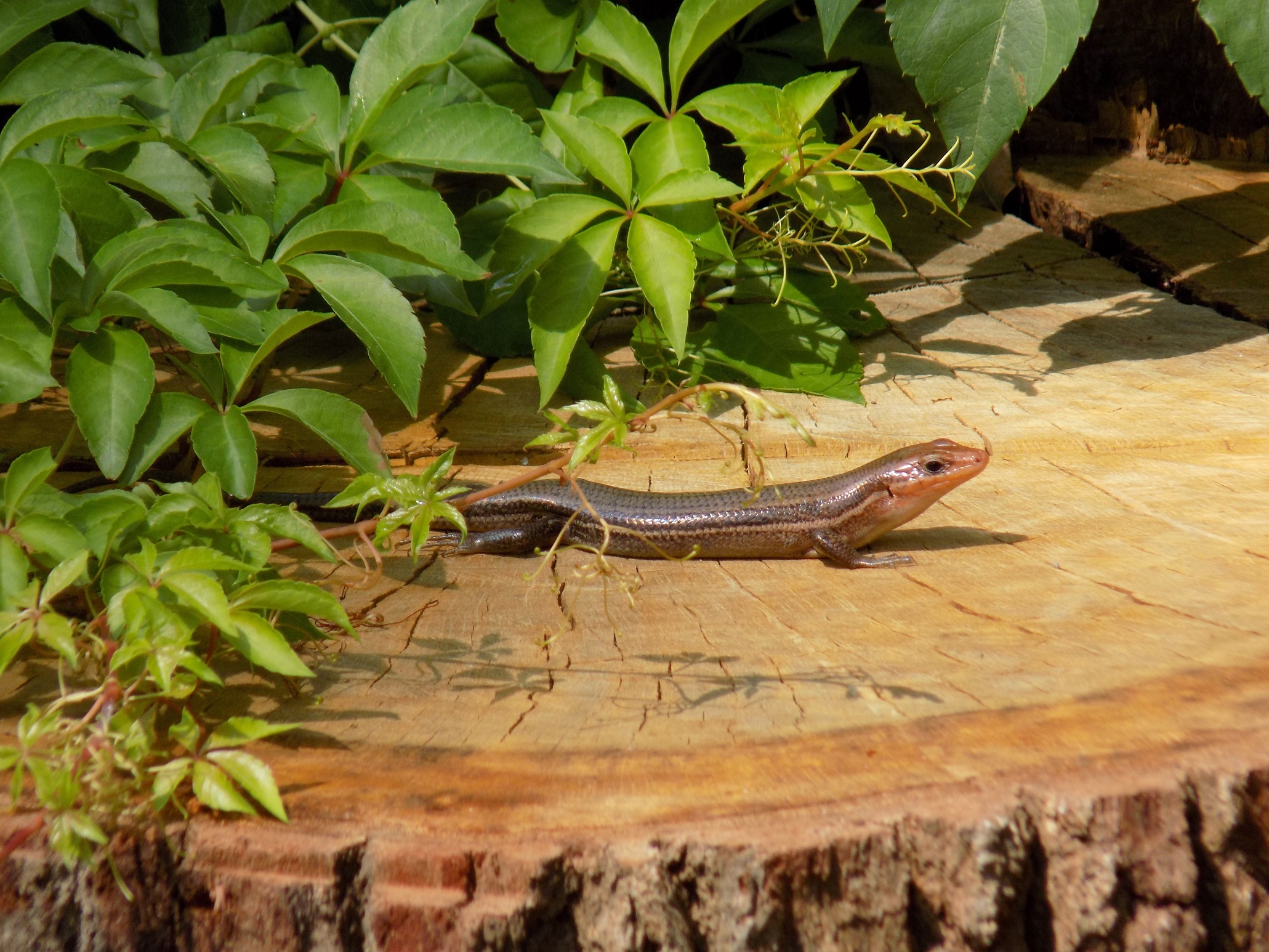




This week for Flora and Fauna Friday, we’re taking a look at a group of lizards found throughout South Carolina. This week we’re talking about the Skinks, family Scincidae.
Here in South Carolina, we have four species of Skink that are found all across the state. They are the Little Brown Skink (Scincella lateralis), Broadhead Skink (Eumeces laticeps), Southeastern Five-lined Skink (Eumeces inexpectatus), and the Common Five-lined Skink (Eumeces fasciatus). All four of these species have smooth scales, short legs, and a streamlined body with lengthwise stripes. Like many lizards, all our Skinks can shed their still-wriggling tails to distract predators. Juvenile skinks of the three larger species look very similar to each other and sport brilliantly blue tails that aid in this distracting defense.
Broadhead Skinks are our largest species of Skink. Adult males can be identified by their sausage-like physique, stripe-less gray brown body, and orange-red, heavy-jowled head. Female Broadhead Skinks are more dainty by comparison and retain some striping on their sides but look a good deal like males of the two Five-lined Skink species. The easiest way to tell Broadhead and Five-Lined Skinks apart is by counting the number of scales on the lip, between the nostril and the front of the eye. Broadhead Skinks have five lip scales where as both Five-lined Skinks have four. Broadhead Skinks are more arboreal than Five-lined Skinks and spend a lot of their time in the trees. They’re also partial to living in hardwood tree hollows and, when startled, will either dart into the nearest hollow tree or up a trunk. This proclivity for cavities often leads them to hang around at human dwellings, where they laze about on porches and scuttle under doors to hide in the garage.
The Little Brown Skink is our most common Skink as well as our smallest lizard. They’re also the easiest to identify. They have a long thin body only a few inches in length with a brown back, gray belly, and a dark gray stripe down their side. They live in the leaf litter of forests where they crawl between the fallen leaves, hunting small insects and spiders.
The Southeastern Five-lined Skink is our next most numerous Skink. They’re more common than their sister species here on the coast as well as in drier habitats and pine forests. The Common Five-lined Skink is more numerous in the upstate but is still relatively abundant on the coast. This species is most common in bottomland hardwood forests in our area but can be found in most damp forests. Both species spend most of their time on the ground but flee up tree trunks when startled. The two species of Five-lined Skink are practically identical in appearance and must be identified by looking at the scales on the underside of the tail. Southeasterns have scales on the underside of the tail that are all about the same size and somewhat disorganized. Commons have a central row of scales that are wider than the others. Males of both species have a red-orange head and typically have a back that is more brown in color, lacking the central stripe. Females are ebony brown in color with 5 pale stripes down the back and sides. Juveniles are black with 5 yellow stripes and a blue tail.